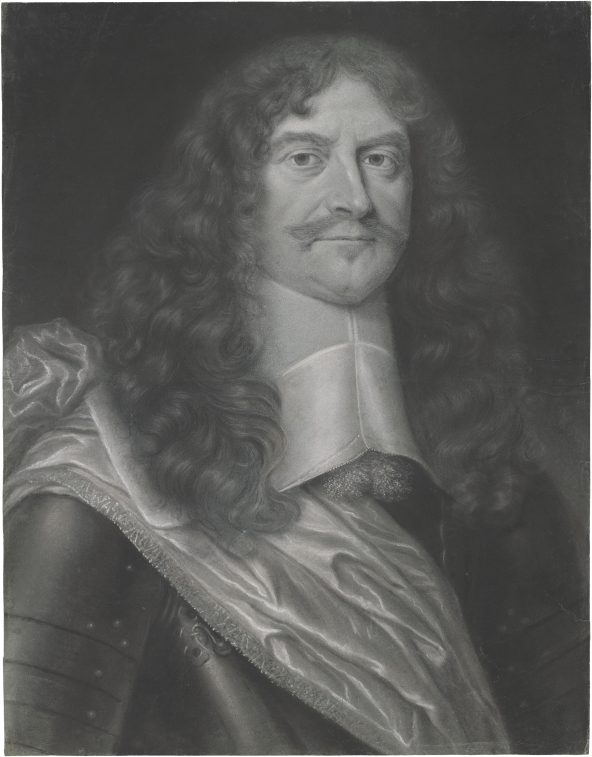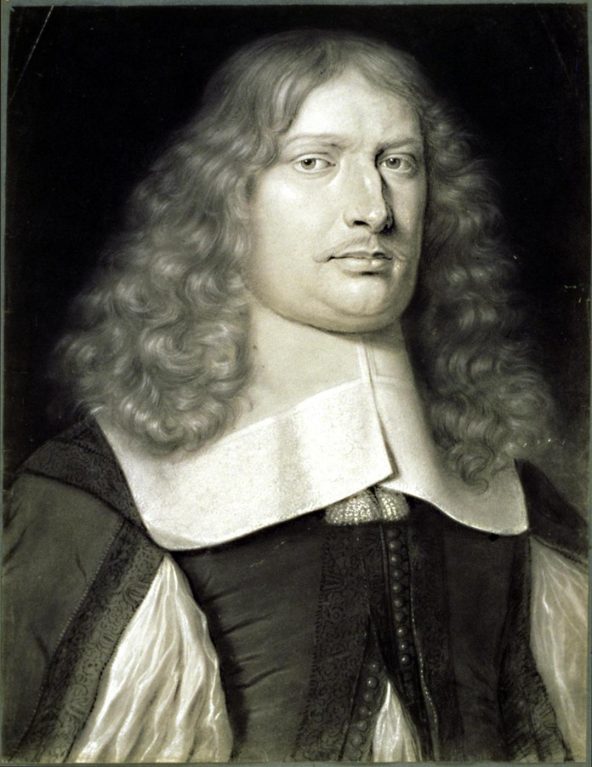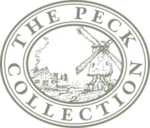Article: Wallerant Vaillant: Master Portraitist
Focus on the Peck Feature
During the seventeenth century, Dutch artist Wallerant Vaillant created portraits of Europe’s most illustrious members of society. Although acclaimed as the first professional mezzotint printmaker, Vaillant’s most remarkable works are drawings he completed using black and white chalk on blue paper.
This Focus on the Peck Collection installation features two portrait drawings by Vaillant, the first gifted to the museum by Sheldon and Leena Peck in 1993 and the other presented as part of the couple’s larger gift of drawings in 2017. Both were made during the 1658 Diet of Frankfurt, where electors, ambassadors, and diplomats convened to elect Leopold I as the next Holy Roman Emperor. In the company of his patron Prince Rupert of the Rhine, Vaillant executed numerous drawn portraits of the dignitaries, many of which were later fashioned into prints for widespread distribution.
Vaillant’s skillful application of black and white chalk contributed to the high degree of naturalism and finish characteristic of his drawings. First, the artist applied varying amounts of finely ground chalk, known as “sauce,” to the surface. He then blended the powdered chalk using sticks of tightly wrapped pieces of paper, called stumping, to create a broad range of black and gray tones. Next, he “erased” some pigment from the surface with clean stumps or pieces of fresh bread and then applied details and highlighting to suggest form. The innovative technique, which resulted in luxurious and fresh likenesses of his sitters, secured Vaillant’s place among the top portraitists of the Dutch Golden Age.
Antoine III, Duc de Gramont

Wallerant Vaillant, Dutch, 1623 – 1677, Antoine III, Duc de Gramont, Marshal of France, 1658 black and white chalk on blue paper, The Peck Collection, 2017.1.83
See this portrait in more detail here.
Antoine III Agénor de Gramont (1604-1678) was an accomplished French military commander and diplomat. In addition to his distinguished role as Marshal of France, he served as French Ambassador during the election and coronation of Holy Roman Emperor Leopold I in 1658. Like other portraits Wallerant Vaillant created at the political event, Gramont appears in a standard bust length, three-quarter view before a dark background. Dressed in armor and adorned with a broad sash, the military leader appears confident and commanding.
Impressed by the artist’s virtuosity, Gramont brought Vaillant with him to France, where he portrayed members of the French royal family during the preparations for Louis XIV’s marriage to Marie-Thérèse, the Infanta of Spain. After several years in Paris, Vaillant returned to Amsterdam in 1665 and remained there until his death in 1677.
Hermann Egon von Fürstenberg

Wallerant Vaillant, Dutch, 1623 – 1677, Hermann Egon von Fürstenberg, Chamberlain and Privy Councilor to the Elector of Bavaria, 1658, black and white chalk and graphite on blue paper, Gift of Leena and Sheldon Peck in honor of Charles Millard, 93.11
See this drawing in more detail here.
Although the sitter of this portrait was once thought to be the Spanish aristocrat Gaspar Ibáñez de Segovia Peralta (1628-1708), recent scholarship has determined a new possible identification. William Robinson has proposed Hermann Egon von Fürstenberg (1627-1674), the head of the Elector of Bavaria’s household and a member of his private council, as the subject of this portrait. Unlike Gaspar Ibáñez, Hermann Egon is listed among the German attendees of the Frankfurt Diet of 1658, where Leopold I was elected Holy Roman Emperor and where Vaillant produced black and white chalk portraits of diplomats and ambassadors. Hermann Egon was an associate of the Duc de Gramont (at left) and played a role in the League of the Rhine, an agreement between the Germans and French meant to weaken the military power of Leopold I and the Austrian Hapsburgs.

